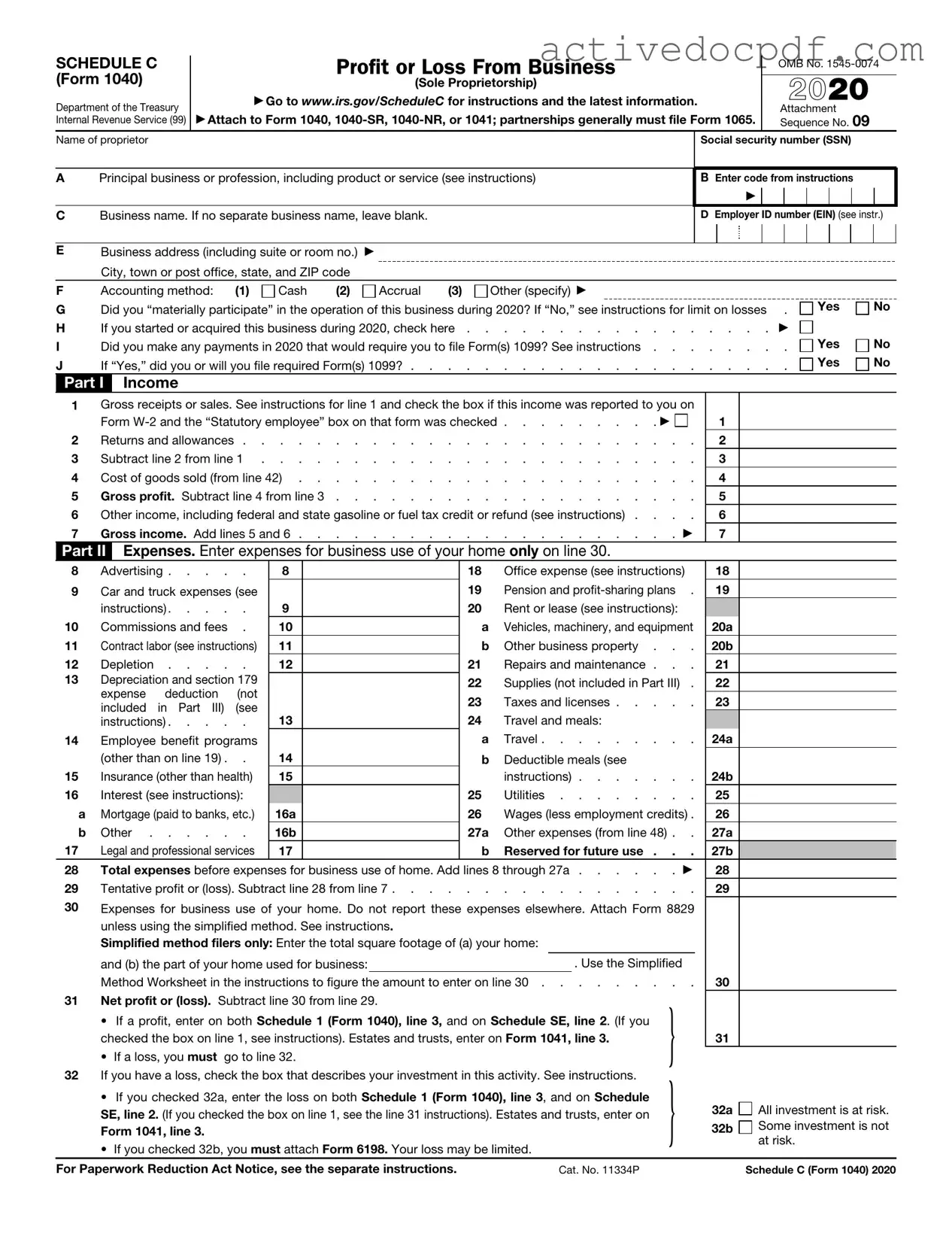The IRS Schedule C 1040 form is used by sole proprietors to report income or loss from their business. It is part of the individual income tax return, Form 1040. This form allows individuals to detail their business earnings, expenses, and net profit or loss, which is then included in their overall income tax calculation.
Who needs to file a Schedule C?
Individuals who operate a business as a sole proprietorship must file Schedule C. This includes freelancers, independent contractors, and anyone who runs a business without forming a separate legal entity. If the business has generated income, filing Schedule C is necessary to report that income to the IRS.
What types of income should be reported on Schedule C?
All income earned from the business should be reported on Schedule C. This includes:
-
Sales revenue
-
Service income
-
Commissions
-
Other business-related income
Any income received in cash, checks, or electronic payments must be included. It is essential to keep accurate records of all income sources throughout the year.
What expenses can be deducted on Schedule C?
Various business expenses can be deducted on Schedule C to reduce taxable income. Common deductible expenses include:
-
Cost of goods sold
-
Rent or lease payments for business property
-
Utilities and office supplies
-
Advertising costs
-
Travel expenses related to business
-
Wages paid to employees
It is important to maintain documentation for all expenses claimed to ensure compliance with IRS regulations.
How do I calculate my net profit or loss on Schedule C?
To calculate net profit or loss, total income from the business is first determined. Then, all allowable business expenses are subtracted from this total. The formula is:
Net Profit or Loss = Total Income - Total Expenses
If the result is positive, it indicates a net profit. A negative result indicates a net loss, which may affect overall tax liability.
When is the deadline to file Schedule C?
Schedule C must be filed by the same deadline as the individual income tax return, Form 1040. Typically, this is April 15 of each year. If additional time is needed, individuals may file for an extension, which generally extends the deadline to October 15. However, any taxes owed must still be paid by the original deadline to avoid penalties and interest.
